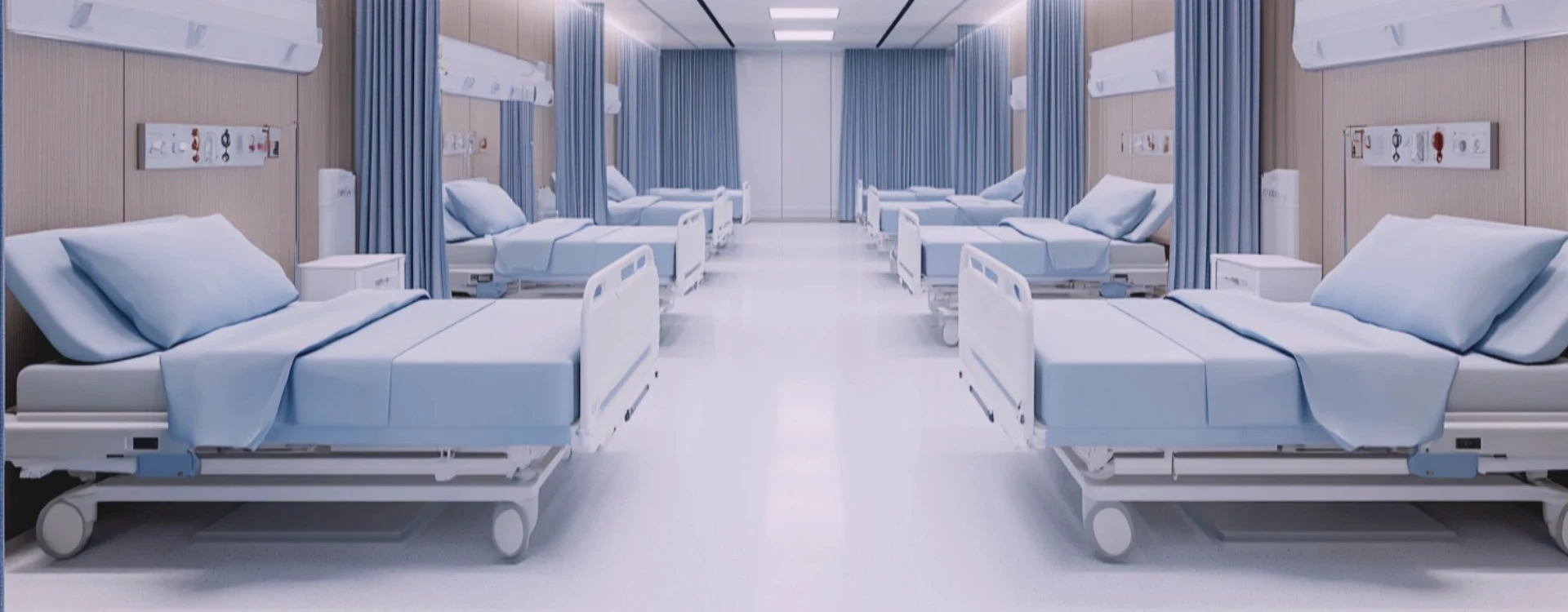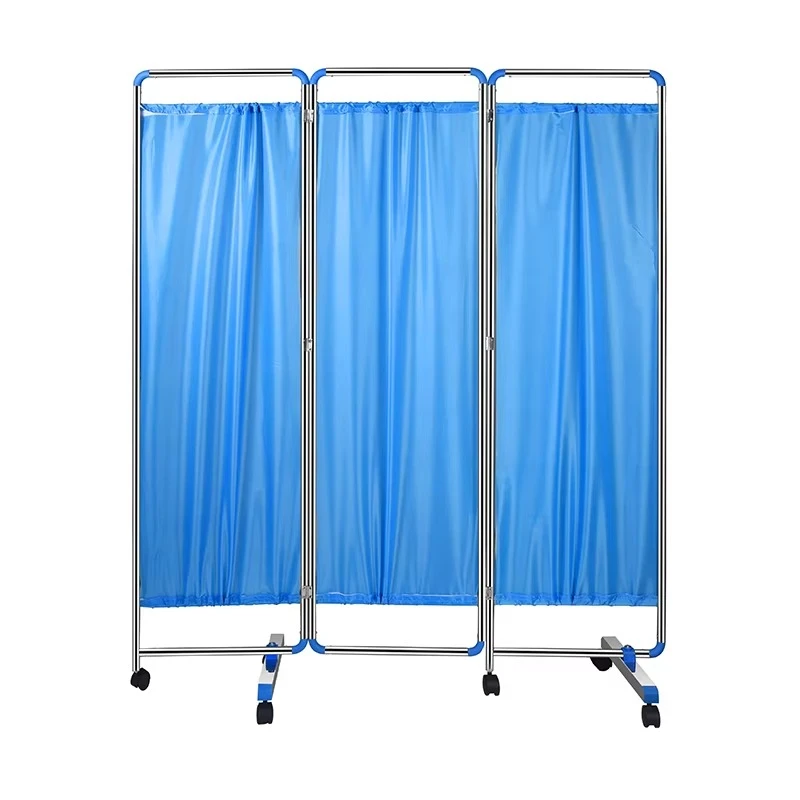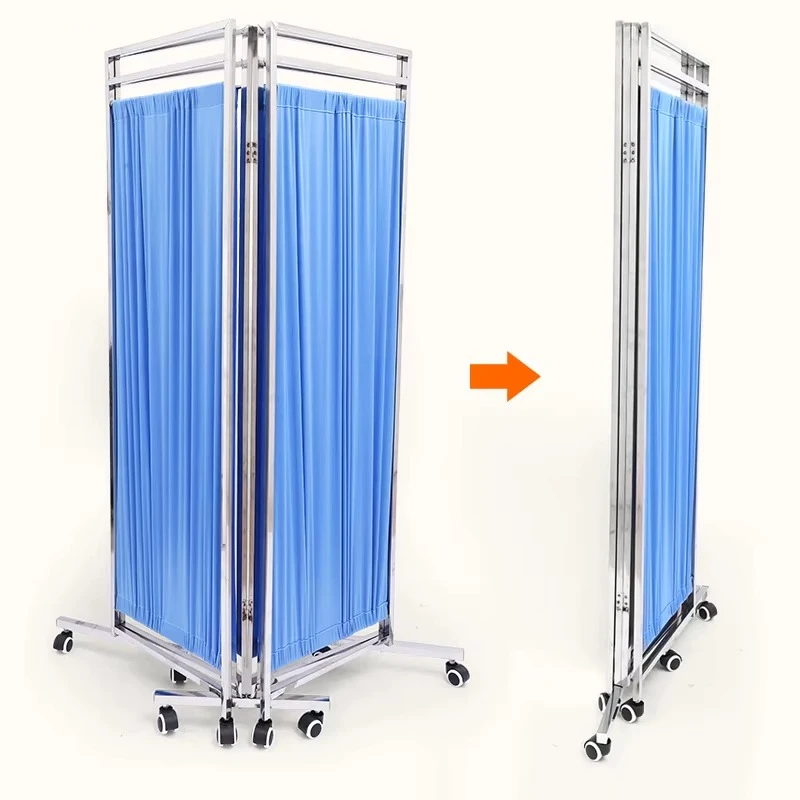
A hospital ward screen is a crucial piece of hospital furniture designed to provide privacy, infection control, and space division within medical facilities. One of its key features is its foldable or portable design, allowing it to be easily adjusted and moved based on hospital needs. These screens are commonly made from materials such as stainless steel, aluminum, or lightweight plastic frames, ensuring durability and stability. The panels are often covered with washable and fire-resistant fabric or medical-grade plastic to ensure hygiene and easy maintenance. Some hospital ward screens come with anti-bacterial coatings to reduce the spread of infections. They are available in different configurations, including two-panel, three-panel, or four-panel designs, which can be expanded or collapsed based on the space required. Mobility is enhanced with lockable caster wheels, allowing quick repositioning without compromising stability. Hospital ward screens are often used to create temporary patient areas, examination zones, or to shield patients from direct exposure to lights and other patients. Some advanced models include acoustic insulation to minimize noise disturbances. Whether used in emergency rooms, general wards, or outpatient clinics, these screens contribute to patient dignity, privacy, and an organized hospital environment while ensuring easy access for healthcare professionals.
How Does A Hospital Ward Screen Improve Patient Privacy And Hospital Efficiency?
A hospital ward screen plays a vital role in enhancing patient privacy and maintaining an efficient hospital environment by creating separated areas within shared spaces. In medical wards, where multiple patients are accommodated in a single room, these screens provide a physical barrier that protects personal dignity during medical examinations, treatment procedures, or rest periods. Patients feel more comfortable and secure when they have a designated private space, which can improve their overall well-being and recovery experience. From an operational perspective, hospital ward screens help healthcare workers conduct medical procedures efficiently without unnecessary distractions or interruptions. They also assist in infection control by minimizing direct exposure to contaminants and respiratory droplets. Additionally, these screens help divide large hospital areas into smaller, functional sections for better space management. In emergency settings, mobile ward screens allow quick setup of temporary treatment zones, ensuring a structured and organized approach to patient care. Some models offer noise-reducing properties, creating a more peaceful environment for patients. The versatility and easy mobility of hospital ward screens make them an essential tool in hospitals, clinics, and even temporary medical camps, ensuring both privacy and operational effectiveness in various healthcare settings.
What Factors Should Be Considered When Choosing A Hospital Ward Screen?
When selecting a hospital ward screen, several factors must be considered to ensure it meets the needs of a medical facility. One important aspect is the material—high-quality stainless steel or aluminum frames provide durability, while medical-grade fabric or plastic panels ensure hygiene and easy cleaning. The number of panels should be chosen based on the required coverage area; larger rooms may need four-panel screens, while smaller spaces can function well with two-panel versions. Mobility is another key factor—screens with lockable caster wheels allow for easy repositioning while maintaining stability. If infection control is a priority, screens with antibacterial coatings or easy-to-disinfect surfaces should be selected. Fire resistance and waterproof capabilities are also essential for maintaining safety and longevity. The screen’s design should complement the hospital’s interior while being practical and functional. For hospitals that require flexibility, foldable or collapsible screens are a great option, as they can be stored efficiently when not in use. Budget considerations and warranty terms should also be reviewed to ensure long-term value. By carefully evaluating these factors, hospitals can select ward screens that enhance privacy, improve patient comfort, and contribute to a well-organized medical environment.



 PDF
PDF


